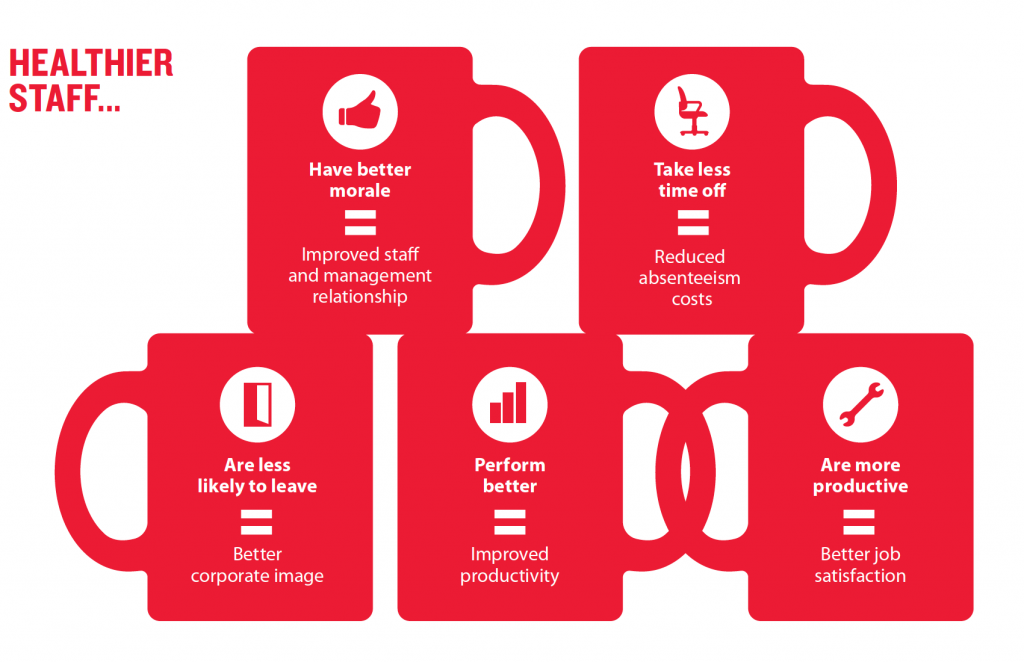What is employee wellbeing and how to get started?
Wellbeing is more than an avoidance of becoming physically sick. It represents a broader construct that includes physical, mental and social health. Employers play a key role in how employees feel at work and this will have a direct correlation on how well they perform.
CIPD defines wellbeing as:
Creating an environment to promote a state of contentment, which allows an employee to flourish and achieve their full potential for the benefit of themselves and their organisation.

Source: British Heart Foundation
What is the incentive?
Benefits for the employer:
- The potential economic return on investment (ROI) for a UK business that invests in workplace health initiatives is £4.17 for every £1 spent.
- An employer who actively promotes wellbeing in the workplace is eight times more likely to have employees fully engaged in their work.
- Promoting good health at work can see a 25 to 40% reduction in absenteeism.
Benefits for employees:
- Employees who take part in workplace health initiatives generally become more active, more fit, and less stressed.
- Workplace health initiatives can boost employee morale and increase job satisfaction
- Engaging in a workplace health initiative helps reduce the risk of illness and disease
Where to start?
Policy – you need some structure in writing
- Wellbeing Champions – initiatives should be locally anchored or they will have little to no impact
- Identify issues and/or interest (look at absence causes, employee health metrics, offer mini medicals, conduct an employee survey etc.)
Evaluation is key
Evaluation of your plan should be instrumental in the ongoing development of your wellbeing strategy. Remember the journey is arguably more important than the destination! Further, when planning, use KPIs and measurable goals (scientific, objective approach):
- Wellbeing data comparisons
- Sickness absence improvements
- MSD cases
- Wellbeing engagement
Subjective evaluation has an important place but will need a great deal of planning. Pre-strategy surveys and timely feedback, as well as update surveys, are all great tools. Wellbeing is often more subjective than objective but don’t worry, just gather any evidence that is available.
If you’d like to find out more about how to get started with an employee wellbeing strategy, get in touch!
